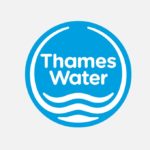Summary
The East Lake Park Water Quality Improvement Project is situated in the City of Chattanooga, Tennessee. The City of Chattanooga and Chattanooga Department of Public Works hired contractor CDM Smith to restore the park by improving its water quality and upgrading the recreational areas. For years, the pond has experienced severe eutrophication as algae flourish excessively, killing other life in it. Contractors have responded to this problem by recommending the dredging of the whole pond, cleaning it, then refilling it. The project represents $15,000 per decade in savings by eliminating specific pond maintenance costs, while total design and construction costs amount to $2,172,520. This includes the cost of constructing a boardwalk, outdoor classroom, and meadow walk, restoring the aquatic and land habitats, as well as restocking the pond with fish. The community surrounding East Lake Park has been heavily involved in the park’s transformation. The meadow walk and boardwalk are among the features voted for by residents. These design features have been intended to enhance residents’ and visitors’ use of the park area, but a great deal of attention has been paid to the water and soil quality of East Lake Park. Design and implementation plans for water and soil quality restoration have been made to ensure the long-term health and sustainability of the East Lake area. Educational projects have been implemented, along with the pond cleaning to avoid future eutrophication, decreasing the total future costs of managing East Lake Park. The project was analyzed using the five categories of the Envision checklist: Quality of Life, Leadership, Resource Allocation, Natural World, and Climate and Risk. The Envision evaluation was conducted to better analyze East Lake Park’s overall sustainability performance. Of the five, the project performed best in the Leadership category, because of strong stakeholder engagement in decision-making and the foresight to design a spring and pond system that would not need to be continually dredged. The project’s score was second best in the Natural World category, as considerable attention was paid to restoring aquatic and land habitats, improving water quality, and preserving greenfields. The Quality of Life category received the third-best score, because of attention paid to community engagement in the designing of the park as well as the park itself providing health and recreational improvements to the East Lake community. The category with the fewest credits achieved was Climate and Risk, because the project’s documentation details did not involve climate adaptation. The Resource Allocation category achieved fewer than half the credits possible, as the local sourcing of materials could have received more attention during the construction of recreational elements, as could the designing of management systems to reduce the amount of excavation and wastewater during and after the project’s completion.
Research director
Prof. Spiro Pollalis
Research core team
Judith Rodriguez, ENV-SP • Walburga Khumalo, Research Associate
Case study written by
Judith Rodriguez, ENV-SP • Walburga Khumalo, Research Associate




